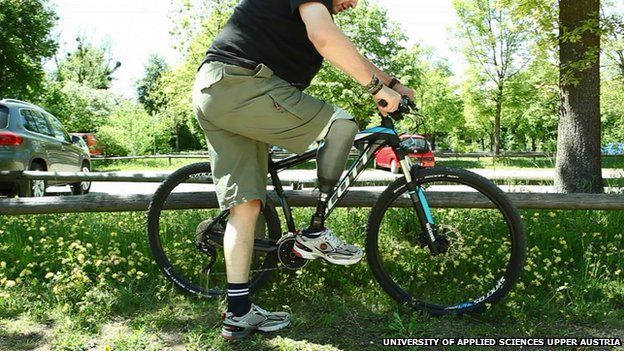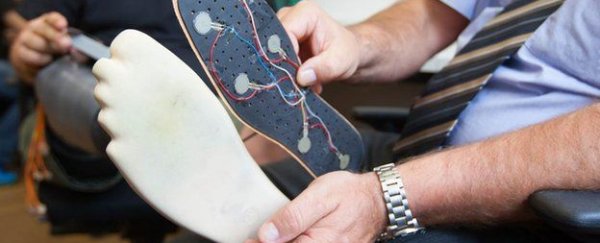For the first time ever, scientists in Austria have demonstrated that a prosthetic leg can restore feeling to the person wearing it, offering new hope for smarter artificial limbs for amputees.
The device works by stimulating a patient's nerve endings in response to pressure, and not only helps its wearer regain sensation and mobility, but also puts an end to the phantom pains often experienced by those who have lost a limb, the creators report.
The prosthetic limb has now been successfully tested over the past six months by 54-year-old amputee Wolfgang Rangger, who lost his right leg in 2007 after suffering a blood clot. "It's like a second lease of life," he told AFP prior to the media unveiling of the device on Monday. "It feels like I have a foot again. I no longer slip on ice and I can tell whether I walk on gravel, concrete, grass or sand. I can even feel small stones."
You can see Rangger testing out the leg below - he's also used it to run, bike ride and go climbing:

In order to install the sensory prosthetic, surgeons first rewired Rangger's severed nerve endings, which would have previously connected his brain to his foot, and placed them close to the surface of his skin.
They then fitted six sensors to the base of the prosthetic foot, which measure pressure as Rangger walks and converts the data into electrical pulses that are relayed up the prosthetic limb to stimulators that touch the stump of Rangger's leg.
These stimulators vibrate, exciting the nerve endings that are now located just under the skin, and this sends sensations to the brain.
"The sensors tell the brain there is a foot and the wearer has the impression that it rolls off the ground when he walks," project leader Huber Egger from the University of Linz in Austria told Fergus Walsh over at the BBC.

In this AFP video, Rangger admits that he still can't feel the foot 100 percent, but it's getting better all the time. And it's put an end to the excruciating phantom limb pain he previously felt following his amputation. This is because his brain now receives real data, rather than searching for stimulation from the missing limb, Egger told Walsh.
The team's results have yet to be published and it'll still be a while before we see the device on the market. But Egger hopes that the announcement will help increase competition and reduce the price of prosthetics, which currently cost around US$11,000 for a high-tech artificial foot.
Last year a team in Sweden announced that they'd managed to restore feeling in an amputee's fingers using a fully implanted, mind-controlled prosthetic arm. Let's keep the progress going.
